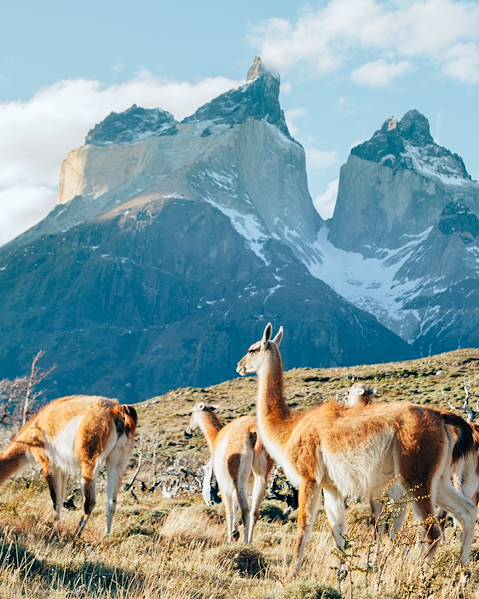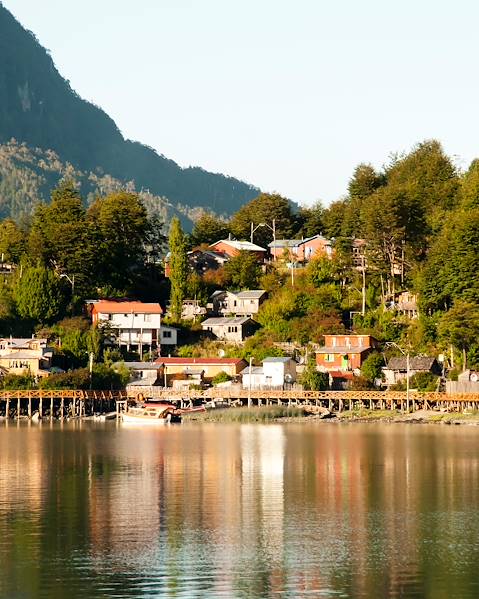At around 2,700 miles long, Chile has a real mix of different climates. The weather is sometimes extremely dry, sometimes freezing, and changes depending on the region. The only common climactic thread that connects the vast Chilean landscapes is seasonality. The seasons there are the opposite of ours, so don't expect summer weather in July and August, as it's winter time. We've put together a travel calendar to make it easy to find the best time to visit to Chile.
January, Here Comes the Southern Summer
January is an ideal month to travel to Chile as it's the start of the summer season. However, given the country's geographical diversity, the climate is very variable.
For any budding meteorologists, a very special phenomenon also occurs in the north of Chile every year from January to March : namely the Altiplanic Winter. The San Pedro de Atacama region and the surrounding area are sometimes subject to heavy rains, which can be accompanied by hail and snow.
Opt for sunny coastal towns, or Easter Island off to the north-west of the Chilean coast.
Be aware that at higher altitudes, temperatures are cooler. For those feeling really ambitious, head to Parinacota in the far north, one of the world's highest cities at 14,528ft. Layering up is essential here.
January is also a good time to travel to Patagonia , as the weather there is generally good, despite occasional showers. But beware, the weather can be particularly changeable in Tierra del Fuego.
February : The Good Weather Continues
Summer continues in February in the Andes, so it's still a good time to visit.
As in January, coastal towns remain a favourite, as showers are rare and the days are sunny. Valparaiso is one of Chile's many coastal gems. Spend time riding the town's many lifts, and wander among its multicoloured cottages and steep alleyways.
Be aware that if you are intent on travelling to higher altitudes, even if the sun is out summer clothing won't cut it.
Meanwhile Easter Island (or Rapa Nui for those in the know) is great for a visit at any time of year, with only a few rainy days a month and very pleasant temperatures around the 24°C mark.
Those wishing to explore the far south of Patagonia will be glad to know that rainfall is low in February, with bright, sunny skies.
March : The First Signs of Autumn
March is the last month of summer, and brings with it a gradual cool-offing across the country.
In Patagonia, the mercury drops and the showers get more intense. Visiting the region in March is therefore not recommended.
On Easter Island, the humidity increases, but you can definitely still visit. The sun shines for the most part, only occasionally hiding behind a few clouds. One of our favourite places is the ceremonial village of Orongo, home to ancient traditions and clinging to the rim of an extinct volcano, with a sheer cliff down to the ocean on one side and a volcanic caldera on the other .
In March the best places to visit are coastal towns, which are mild at that time of year.
In the Cordillera range, most of the area requires warm clothing by then, as snow is already starting to fall.
April : Changing Weather
In April, the southern winter slowly starts to make an appearance in some parts of the country. For more temperate weather, head to the coastal towns in northern Chile. This is the ideal time to visit the seaside resort of Vina del Mar, as it's much less crowded at this time of the year.
Heat still reigns supreme on Easter Island, too, no matter the time of day.
For experienced walkers wishing to take on the challenge of the Andes, we recommend not going in April, as it's already gripped by cold weather.
In Patagonia, the temperatures are also on the chilly side (up to a maximum of 10°C), but you can still visit Tierra del Fuego as long as you're well-equipped. Rainfall also drops slightly.
May: The Cold Gets Closer
From May onwards, rainfall is high in the central regions of Chile and around Santiago. However, temperatures stay around 15°C until September, so it's possible to go exploring, just make sure you have a good raincoat.
Once again, the towns



















